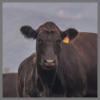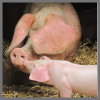-

Jul
03
Interpretive Summary: Hydrolyzed chicken liver and increasing crude protein levels on palatability, digestibility, and intestinal fermentation products of cats

Replacing conventional proteins with hydrolyzed proteins in diets for companion animals has demonstrated clinical and nutritional benefits, such as improved digestibility and reduced fermentation products in the large intestine. Based on this, the current study evaluated the effects of 2 protein sources (hydrolyzed chicken liver (HCL) and poultry byproduct meal) and 3 crude protein concentrations (24%, 32%, and 40%) on digestibility, fecal and urinary characteristics, fecal fermentative end products, and palatability of healthy adult cats.
Read more
-

Jun
26
Washington Roundup – June 2025

On June 23rd, the House Appropriations Committee approved its version of FY 2026 agriculture appropriations by at vote of 35-27. The House bill provides a total discretionary allocation of $25.523 billion, which is $1.163 billion (4.2%) below the Fiscal Year 2025 enacted level. The House bill does not follow the Administration’s request for major cuts to USDA research, education and economics programs.
Read more
-

Jun
19
Dear American Society of Animal Science members,
The publications committee is working to meet the needs of the society. Over this past year, two topics have arisen with respect to the publication of manuscripts in the society’s journals. The committee would like to get your input on these topics that could dramatically impact the American Society of Animal Science.
Read more
-

Jun
19
Interpretive Summary: The relationship of lactating beef cow metabolizable energy intake to energy partitioning, milk composition, and calf performance

Efficient beef production is crucial for meeting global food demands. Most of the feed consumed by beef cows is used for essential bodily functions like breathing, maintaining heart rate, and regulating body temperature. The remaining energy is partitioned into milk production, body weight gain, and pregnancy.
Read more
-

Jun
19
Interpretive Summary: The standardized ileal digestible lysine-to-net energy ratio in the diets of lactating primiparous sows to optimize maternal nitrogen retention is dynamic but does not impact piglet performance

Fifty-five first lactation sows were used to evaluate how the dietary standardized ileal digestible (SID) Lys-to-net energy (NE) ratio affected nitrogen use by the sow and piglet growth performance. Sows were randomly assigned to one of five diets that had equally spaced and increasing SID Lys-to-NE ratios from 2.85 and 5.51 g SID Lys/Mcal NE that were fed for a 24-d lactation.
Read more
-

Jun
19
Interpretive Summary: Effects of supplemental seaweed extract on antioxidant properties, loose stools, gut microbiota, and its metabolite composition in adult dogs
f9f6e145-0d94-48bc-b318-d77602739afe.png?sfvrsn=22ba5ad1_1)
Supplementing prebiotics, particularly plant polysaccharides, in pet food is currently regarded as an important approach to enhancing gut health. Polysaccharides can produce abundant short-chain fatty acids (SCFAs) in the large intestine, thereby benefiting health.
Read more
-

Jun
19
Interpretive Summary: Rein tension and heart rate variability in horses: an experiment on experience
50ca978c-3ace-485b-b3a4-6ef4add6eb0d.png?sfvrsn=f9ba5ad1_1)
This study explores how different levels of rein tension affect the stress response and heart activity in horses, focusing on the differences between younger and older horses. We aimed to understand whether the experience of older horses makes them less sensitive to rein tension compared to younger ones.
Read more
-

Jun
19
Interpretive Summary: Access to the outdoors during summer affects feed efficiency, carcass composition and meat quality in a slow-growing pure strain of chickens
8a33b22d-c6bf-4fa0-9b81-390fc39de198.png?sfvrsn=d6ba5ad1_1)
This study assessed the effects of outdoor access, which is required to produce “Label Rouge” slow-growing chickens, compared to indoor rearing, which is used in genetic selection for health reasons. Chickens were reared either indoors or with outdoor access after 28 d of age for 2 consecutive summers (2022 and 2023), a season when farmers often observe lower performance.
Read more
-

Jun
18
The Giving Herd - ASAS Foundation Newsletter - June 2025

The June Edition of The Giving Herd, an ASAS Foundation Newsletter
Read more
-

Jun
18
Dennis Lamm's ASAS Journey
Dennis Lamm's ASAS Journey
Read more
-

Jun
12
Interpretive Summary: In vitro fermentation characteristics of acacia fiber using canine fecal inoculum
c4613dcb-9078-4229-8bce-7850973f9e84.png?sfvrsn=d7aa5ad1_1)
Acacia fiber is a soluble dietary fiber extracted from the natural resin of acacia trees. This fiber is often utilized in the pet food industry as a processing aid to improve texture and stability but there is limited information regarding its effect on canine gastrointestinal health. The current study used an in vitro fermentation system and canine fecal inoculum to mimic the colonic bacterial fermentation process and assess the fermentation characteristics of acacia fiber, inulin, pectin (positive control), and cellulose (negative control).
Read more
-

Jun
12
Interpretive Summary: Beef cattle phenotypic plasticity and stability of dry matter intake and respiration rate across varying levels of temperature humidity index
71565827-33ad-41c8-82cb-6b0482a53549.png?sfvrsn=f6aa5ad1_1)
The objectives of this work were to evaluate how population genetic and phenotypic components for dry matter intake and respiration rate in beef cattle changed as a function of temperature humidity index, to determine whether genotype-by-environment interactions (G × E) influenced selection decisions when breeding values (BV) were sourced from disparate environments, and to evaluate model-derived accuracy of BV at specific values of the temperature humidity index.
Read more
-

Jun
12
Interpretive Summary: Genetic correlations between enteric methane and traits of economic importance in a beef finishing system
e9d4aec4-cef0-486e-968c-7dd4636a357a.png?sfvrsn=14aa5ad1_1)
Reducing enteric methane and carbon dioxide emissions from cattle is a key strategy in mitigating climate change impacts. This study explored the relationship between enteric methane production and economically important traits such as growth and carcass quality in beef cattle.
Read more
-

Jun
12
Interpretive Summary: Circulating microRNAs associated with immune competence in Angus cattle
6e470c4d-ea9f-44a9-930b-0fbc61d1fc58.png?sfvrsn=37aa5ad1_1)
Immune competence is a measurable trait that was developed to determine the ability of animals to respond to an infection. This trait involves measuring the response to vaccination and has been used in cattle selective breeding programs to ensure that animals maintain an effective ability to control disease, improving animal outcomes and productivity.
Read more
-

Jun
12
Interpretive Summary: Effects of clodronate disodium on endocrine regulators of calcium in yearling horses
73642652-8d76-44e9-a398-1f90d2855ed6.png?sfvrsn=6eaa5ad1_1)
Despite limited scientific understanding of the impacts on juvenile horses, extra-label use of bisphosphonates is anecdotally reported to be widespread. This study was conducted to determine the effects of clodronate disodium (CD), a specific bisphosphonate, on hormones associated with blood calcium regulation.
Read more
-

Jun
12
Interpretive Summary: Impact of initial postweaning feed intake on weanling piglet metabolism, gut health, and immunity
86e239b6-ca01-461c-a3d6-c70bbf165dc4.png?sfvrsn=a6ab5ad1_1)
Individual feed intake observed during the first week postweaning influenced intestinal development and physiology. Weanling pigs were classified as high or low eaters during the first 3 d after weaning and subsequently split into high and low eaters from days 4 to 6, hence, forming four patterns. Overall, piglets with higher feed intake presented a reduced metabolic stress and an activated immune system.
Read more
-

Jun
05
Interpretive Summary: Opportunities to improve environmental sustainability of pork production through genetics
228a8972-e365-4ec2-92ff-0f17570289d2.png?sfvrsn=50895ad1_1)
By increasing productivity and feed efficiency, genetic improvement has led to substantial reductions in the carbon footprint of pork production over the past decades. This review concludes that, other than continuing and accelerating genetic improvement for productivity and efficiency, opportunities to further enhance reductions in the carbon footprint of pork production through genetics are limited when based on traits that are currently routinely collected in breeding programs.
Read more
-

Jun
05
Interpretive Summary: Technologies and practices to improve feed and nutrient utilization by pigs
4ee63245-a545-4702-b6bf-0d65db9b7808.png?sfvrsn=73895ad1_1)
Improving feed and nutrient utilization of pigs will play a crucial role in helping lead the shift towards increased sustainability in pork production. Nutritional practices such as precision feeding, use of enzymes and feed additives, physical and thermal processing of diets, and reduction in feed wastage, coupled with genetic, health, and barn management improvements, can reduce the environmental impact of pork production.
Read more
-

Jun
05
Interpretive Summary: Piglet birth weight but not the timing of zinc supplementation in gestation diets affects tissue mineral concentrations and gene expression
7d50df99-ecaa-40f4-93cb-dbd6ea773488.png?sfvrsn=928a5ad1_1)
This research was designed to identify periods during gestation for feeding high zinc that would improve piglet survival and to elucidate how high maternal zinc feeding affects sow and piglet trace mineral levels and gene expression in piglets. Thirty sows were assigned to treatments (10 sows per treatment): 1) Control—sows fed a corn–soybean meal-based diet containing 206 ppm total supplemental zinc; 2) Breed-to-Farrow—as Control + 147 ppm supplemental Zn from 5 days post-breeding to farrowing; and 3) Day 110-to-Farrow—as Control + 4,079 ppm supplemental Zn starting on day 110 of gestation until farrowing.
Read more
-

Jun
05
Interpretive Summary: Effects of corn protein inclusion on apparent total tract macronutrient digestibility, palatability, and fecal characteristics, microbiota, and metabolites of healthy adult dogs
fe5eb54e-e9b0-4e8c-ba70-bb2c5de41825.png?sfvrsn=ad8a5ad1_1)
Corn protein (CP), a co-product of the corn ethanol industry, was evaluated as a protein source in dog foods. The study goals were to determine how CP inclusion affected the apparent total tract digestibility (ATTD) and palatability of dog foods and the health markers of dogs consuming them.
Read more
 JulInterpretive Summary: Hydrolyzed chicken liver and increasing crude protein levels on palatability, digestibility, and intestinal fermentation products of cats
JulInterpretive Summary: Hydrolyzed chicken liver and increasing crude protein levels on palatability, digestibility, and intestinal fermentation products of cats Replacing conventional proteins with hydrolyzed proteins in diets for companion animals has demonstrated clinical and nutritional benefits, such as improved digestibility and reduced fermentation products in the large intestine. Based on this, the current study evaluated the effects of 2 protein sources (hydrolyzed chicken liver (HCL) and poultry byproduct meal) and 3 crude protein concentrations (24%, 32%, and 40%) on digestibility, fecal and urinary characteristics, fecal fermentative end products, and palatability of healthy adult cats.
Replacing conventional proteins with hydrolyzed proteins in diets for companion animals has demonstrated clinical and nutritional benefits, such as improved digestibility and reduced fermentation products in the large intestine. Based on this, the current study evaluated the effects of 2 protein sources (hydrolyzed chicken liver (HCL) and poultry byproduct meal) and 3 crude protein concentrations (24%, 32%, and 40%) on digestibility, fecal and urinary characteristics, fecal fermentative end products, and palatability of healthy adult cats. JunWashington Roundup – June 2025
JunWashington Roundup – June 2025 On June 23rd, the House Appropriations Committee approved its version of FY 2026 agriculture appropriations by at vote of 35-27. The House bill provides a total discretionary allocation of $25.523 billion, which is $1.163 billion (4.2%) below the Fiscal Year 2025 enacted level. The House bill does not follow the Administration’s request for major cuts to USDA research, education and economics programs.
On June 23rd, the House Appropriations Committee approved its version of FY 2026 agriculture appropriations by at vote of 35-27. The House bill provides a total discretionary allocation of $25.523 billion, which is $1.163 billion (4.2%) below the Fiscal Year 2025 enacted level. The House bill does not follow the Administration’s request for major cuts to USDA research, education and economics programs. JunDear American Society of Animal Science members,
JunDear American Society of Animal Science members, JunInterpretive Summary: The relationship of lactating beef cow metabolizable energy intake to energy partitioning, milk composition, and calf performance
JunInterpretive Summary: The relationship of lactating beef cow metabolizable energy intake to energy partitioning, milk composition, and calf performance Efficient beef production is crucial for meeting global food demands. Most of the feed consumed by beef cows is used for essential bodily functions like breathing, maintaining heart rate, and regulating body temperature. The remaining energy is partitioned into milk production, body weight gain, and pregnancy.
Efficient beef production is crucial for meeting global food demands. Most of the feed consumed by beef cows is used for essential bodily functions like breathing, maintaining heart rate, and regulating body temperature. The remaining energy is partitioned into milk production, body weight gain, and pregnancy. JunInterpretive Summary: The standardized ileal digestible lysine-to-net energy ratio in the diets of lactating primiparous sows to optimize maternal nitrogen retention is dynamic but does not impact piglet performance
JunInterpretive Summary: The standardized ileal digestible lysine-to-net energy ratio in the diets of lactating primiparous sows to optimize maternal nitrogen retention is dynamic but does not impact piglet performance Fifty-five first lactation sows were used to evaluate how the dietary standardized ileal digestible (SID) Lys-to-net energy (NE) ratio affected nitrogen use by the sow and piglet growth performance. Sows were randomly assigned to one of five diets that had equally spaced and increasing SID Lys-to-NE ratios from 2.85 and 5.51 g SID Lys/Mcal NE that were fed for a 24-d lactation.
Fifty-five first lactation sows were used to evaluate how the dietary standardized ileal digestible (SID) Lys-to-net energy (NE) ratio affected nitrogen use by the sow and piglet growth performance. Sows were randomly assigned to one of five diets that had equally spaced and increasing SID Lys-to-NE ratios from 2.85 and 5.51 g SID Lys/Mcal NE that were fed for a 24-d lactation. JunInterpretive Summary: Effects of supplemental seaweed extract on antioxidant properties, loose stools, gut microbiota, and its metabolite composition in adult dogs
JunInterpretive Summary: Effects of supplemental seaweed extract on antioxidant properties, loose stools, gut microbiota, and its metabolite composition in adult dogsf9f6e145-0d94-48bc-b318-d77602739afe.png?sfvrsn=22ba5ad1_1) Supplementing prebiotics, particularly plant polysaccharides, in pet food is currently regarded as an important approach to enhancing gut health. Polysaccharides can produce abundant short-chain fatty acids (SCFAs) in the large intestine, thereby benefiting health.
Supplementing prebiotics, particularly plant polysaccharides, in pet food is currently regarded as an important approach to enhancing gut health. Polysaccharides can produce abundant short-chain fatty acids (SCFAs) in the large intestine, thereby benefiting health. JunInterpretive Summary: Rein tension and heart rate variability in horses: an experiment on experience
JunInterpretive Summary: Rein tension and heart rate variability in horses: an experiment on experience50ca978c-3ace-485b-b3a4-6ef4add6eb0d.png?sfvrsn=f9ba5ad1_1) This study explores how different levels of rein tension affect the stress response and heart activity in horses, focusing on the differences between younger and older horses. We aimed to understand whether the experience of older horses makes them less sensitive to rein tension compared to younger ones.
This study explores how different levels of rein tension affect the stress response and heart activity in horses, focusing on the differences between younger and older horses. We aimed to understand whether the experience of older horses makes them less sensitive to rein tension compared to younger ones. JunInterpretive Summary: Access to the outdoors during summer affects feed efficiency, carcass composition and meat quality in a slow-growing pure strain of chickens
JunInterpretive Summary: Access to the outdoors during summer affects feed efficiency, carcass composition and meat quality in a slow-growing pure strain of chickens8a33b22d-c6bf-4fa0-9b81-390fc39de198.png?sfvrsn=d6ba5ad1_1) This study assessed the effects of outdoor access, which is required to produce “Label Rouge” slow-growing chickens, compared to indoor rearing, which is used in genetic selection for health reasons. Chickens were reared either indoors or with outdoor access after 28 d of age for 2 consecutive summers (2022 and 2023), a season when farmers often observe lower performance.
This study assessed the effects of outdoor access, which is required to produce “Label Rouge” slow-growing chickens, compared to indoor rearing, which is used in genetic selection for health reasons. Chickens were reared either indoors or with outdoor access after 28 d of age for 2 consecutive summers (2022 and 2023), a season when farmers often observe lower performance. JunThe Giving Herd - ASAS Foundation Newsletter - June 2025
JunThe Giving Herd - ASAS Foundation Newsletter - June 2025 The June Edition of The Giving Herd, an ASAS Foundation Newsletter
The June Edition of The Giving Herd, an ASAS Foundation Newsletter JunDennis Lamm's ASAS Journey
JunDennis Lamm's ASAS Journey JunInterpretive Summary: In vitro fermentation characteristics of acacia fiber using canine fecal inoculum
JunInterpretive Summary: In vitro fermentation characteristics of acacia fiber using canine fecal inoculumc4613dcb-9078-4229-8bce-7850973f9e84.png?sfvrsn=d7aa5ad1_1) Acacia fiber is a soluble dietary fiber extracted from the natural resin of acacia trees. This fiber is often utilized in the pet food industry as a processing aid to improve texture and stability but there is limited information regarding its effect on canine gastrointestinal health. The current study used an in vitro fermentation system and canine fecal inoculum to mimic the colonic bacterial fermentation process and assess the fermentation characteristics of acacia fiber, inulin, pectin (positive control), and cellulose (negative control).
Acacia fiber is a soluble dietary fiber extracted from the natural resin of acacia trees. This fiber is often utilized in the pet food industry as a processing aid to improve texture and stability but there is limited information regarding its effect on canine gastrointestinal health. The current study used an in vitro fermentation system and canine fecal inoculum to mimic the colonic bacterial fermentation process and assess the fermentation characteristics of acacia fiber, inulin, pectin (positive control), and cellulose (negative control). JunInterpretive Summary: Beef cattle phenotypic plasticity and stability of dry matter intake and respiration rate across varying levels of temperature humidity index
JunInterpretive Summary: Beef cattle phenotypic plasticity and stability of dry matter intake and respiration rate across varying levels of temperature humidity index71565827-33ad-41c8-82cb-6b0482a53549.png?sfvrsn=f6aa5ad1_1) The objectives of this work were to evaluate how population genetic and phenotypic components for dry matter intake and respiration rate in beef cattle changed as a function of temperature humidity index, to determine whether genotype-by-environment interactions (G × E) influenced selection decisions when breeding values (BV) were sourced from disparate environments, and to evaluate model-derived accuracy of BV at specific values of the temperature humidity index.
The objectives of this work were to evaluate how population genetic and phenotypic components for dry matter intake and respiration rate in beef cattle changed as a function of temperature humidity index, to determine whether genotype-by-environment interactions (G × E) influenced selection decisions when breeding values (BV) were sourced from disparate environments, and to evaluate model-derived accuracy of BV at specific values of the temperature humidity index. JunInterpretive Summary: Genetic correlations between enteric methane and traits of economic importance in a beef finishing system
JunInterpretive Summary: Genetic correlations between enteric methane and traits of economic importance in a beef finishing systeme9d4aec4-cef0-486e-968c-7dd4636a357a.png?sfvrsn=14aa5ad1_1) Reducing enteric methane and carbon dioxide emissions from cattle is a key strategy in mitigating climate change impacts. This study explored the relationship between enteric methane production and economically important traits such as growth and carcass quality in beef cattle.
Reducing enteric methane and carbon dioxide emissions from cattle is a key strategy in mitigating climate change impacts. This study explored the relationship between enteric methane production and economically important traits such as growth and carcass quality in beef cattle. JunInterpretive Summary: Circulating microRNAs associated with immune competence in Angus cattle
JunInterpretive Summary: Circulating microRNAs associated with immune competence in Angus cattle6e470c4d-ea9f-44a9-930b-0fbc61d1fc58.png?sfvrsn=37aa5ad1_1) Immune competence is a measurable trait that was developed to determine the ability of animals to respond to an infection. This trait involves measuring the response to vaccination and has been used in cattle selective breeding programs to ensure that animals maintain an effective ability to control disease, improving animal outcomes and productivity.
Immune competence is a measurable trait that was developed to determine the ability of animals to respond to an infection. This trait involves measuring the response to vaccination and has been used in cattle selective breeding programs to ensure that animals maintain an effective ability to control disease, improving animal outcomes and productivity. JunInterpretive Summary: Effects of clodronate disodium on endocrine regulators of calcium in yearling horses
JunInterpretive Summary: Effects of clodronate disodium on endocrine regulators of calcium in yearling horses73642652-8d76-44e9-a398-1f90d2855ed6.png?sfvrsn=6eaa5ad1_1) Despite limited scientific understanding of the impacts on juvenile horses, extra-label use of bisphosphonates is anecdotally reported to be widespread. This study was conducted to determine the effects of clodronate disodium (CD), a specific bisphosphonate, on hormones associated with blood calcium regulation.
Despite limited scientific understanding of the impacts on juvenile horses, extra-label use of bisphosphonates is anecdotally reported to be widespread. This study was conducted to determine the effects of clodronate disodium (CD), a specific bisphosphonate, on hormones associated with blood calcium regulation. JunInterpretive Summary: Impact of initial postweaning feed intake on weanling piglet metabolism, gut health, and immunity
JunInterpretive Summary: Impact of initial postweaning feed intake on weanling piglet metabolism, gut health, and immunity86e239b6-ca01-461c-a3d6-c70bbf165dc4.png?sfvrsn=a6ab5ad1_1) Individual feed intake observed during the first week postweaning influenced intestinal development and physiology. Weanling pigs were classified as high or low eaters during the first 3 d after weaning and subsequently split into high and low eaters from days 4 to 6, hence, forming four patterns. Overall, piglets with higher feed intake presented a reduced metabolic stress and an activated immune system.
Individual feed intake observed during the first week postweaning influenced intestinal development and physiology. Weanling pigs were classified as high or low eaters during the first 3 d after weaning and subsequently split into high and low eaters from days 4 to 6, hence, forming four patterns. Overall, piglets with higher feed intake presented a reduced metabolic stress and an activated immune system. JunInterpretive Summary: Opportunities to improve environmental sustainability of pork production through genetics
JunInterpretive Summary: Opportunities to improve environmental sustainability of pork production through genetics228a8972-e365-4ec2-92ff-0f17570289d2.png?sfvrsn=50895ad1_1) By increasing productivity and feed efficiency, genetic improvement has led to substantial reductions in the carbon footprint of pork production over the past decades. This review concludes that, other than continuing and accelerating genetic improvement for productivity and efficiency, opportunities to further enhance reductions in the carbon footprint of pork production through genetics are limited when based on traits that are currently routinely collected in breeding programs.
By increasing productivity and feed efficiency, genetic improvement has led to substantial reductions in the carbon footprint of pork production over the past decades. This review concludes that, other than continuing and accelerating genetic improvement for productivity and efficiency, opportunities to further enhance reductions in the carbon footprint of pork production through genetics are limited when based on traits that are currently routinely collected in breeding programs. JunInterpretive Summary: Technologies and practices to improve feed and nutrient utilization by pigs
JunInterpretive Summary: Technologies and practices to improve feed and nutrient utilization by pigs4ee63245-a545-4702-b6bf-0d65db9b7808.png?sfvrsn=73895ad1_1) Improving feed and nutrient utilization of pigs will play a crucial role in helping lead the shift towards increased sustainability in pork production. Nutritional practices such as precision feeding, use of enzymes and feed additives, physical and thermal processing of diets, and reduction in feed wastage, coupled with genetic, health, and barn management improvements, can reduce the environmental impact of pork production.
Improving feed and nutrient utilization of pigs will play a crucial role in helping lead the shift towards increased sustainability in pork production. Nutritional practices such as precision feeding, use of enzymes and feed additives, physical and thermal processing of diets, and reduction in feed wastage, coupled with genetic, health, and barn management improvements, can reduce the environmental impact of pork production. JunInterpretive Summary: Piglet birth weight but not the timing of zinc supplementation in gestation diets affects tissue mineral concentrations and gene expression
JunInterpretive Summary: Piglet birth weight but not the timing of zinc supplementation in gestation diets affects tissue mineral concentrations and gene expression7d50df99-ecaa-40f4-93cb-dbd6ea773488.png?sfvrsn=928a5ad1_1) This research was designed to identify periods during gestation for feeding high zinc that would improve piglet survival and to elucidate how high maternal zinc feeding affects sow and piglet trace mineral levels and gene expression in piglets. Thirty sows were assigned to treatments (10 sows per treatment): 1) Control—sows fed a corn–soybean meal-based diet containing 206 ppm total supplemental zinc; 2) Breed-to-Farrow—as Control + 147 ppm supplemental Zn from 5 days post-breeding to farrowing; and 3) Day 110-to-Farrow—as Control + 4,079 ppm supplemental Zn starting on day 110 of gestation until farrowing.
This research was designed to identify periods during gestation for feeding high zinc that would improve piglet survival and to elucidate how high maternal zinc feeding affects sow and piglet trace mineral levels and gene expression in piglets. Thirty sows were assigned to treatments (10 sows per treatment): 1) Control—sows fed a corn–soybean meal-based diet containing 206 ppm total supplemental zinc; 2) Breed-to-Farrow—as Control + 147 ppm supplemental Zn from 5 days post-breeding to farrowing; and 3) Day 110-to-Farrow—as Control + 4,079 ppm supplemental Zn starting on day 110 of gestation until farrowing. JunInterpretive Summary: Effects of corn protein inclusion on apparent total tract macronutrient digestibility, palatability, and fecal characteristics, microbiota, and metabolites of healthy adult dogs
JunInterpretive Summary: Effects of corn protein inclusion on apparent total tract macronutrient digestibility, palatability, and fecal characteristics, microbiota, and metabolites of healthy adult dogsfe5eb54e-e9b0-4e8c-ba70-bb2c5de41825.png?sfvrsn=ad8a5ad1_1) Corn protein (CP), a co-product of the corn ethanol industry, was evaluated as a protein source in dog foods. The study goals were to determine how CP inclusion affected the apparent total tract digestibility (ATTD) and palatability of dog foods and the health markers of dogs consuming them.
Corn protein (CP), a co-product of the corn ethanol industry, was evaluated as a protein source in dog foods. The study goals were to determine how CP inclusion affected the apparent total tract digestibility (ATTD) and palatability of dog foods and the health markers of dogs consuming them.



